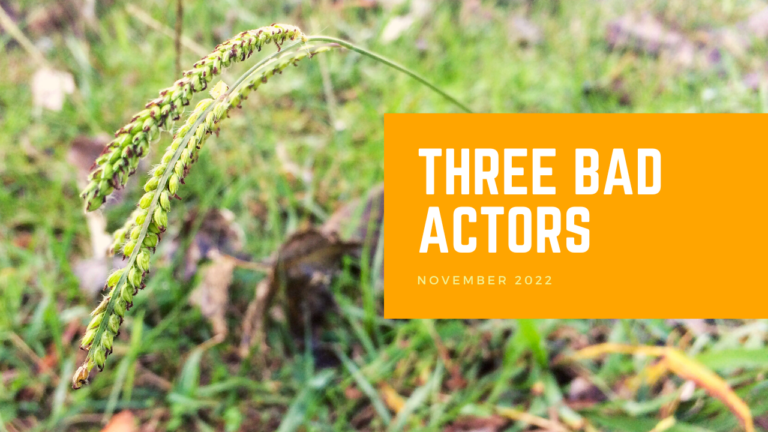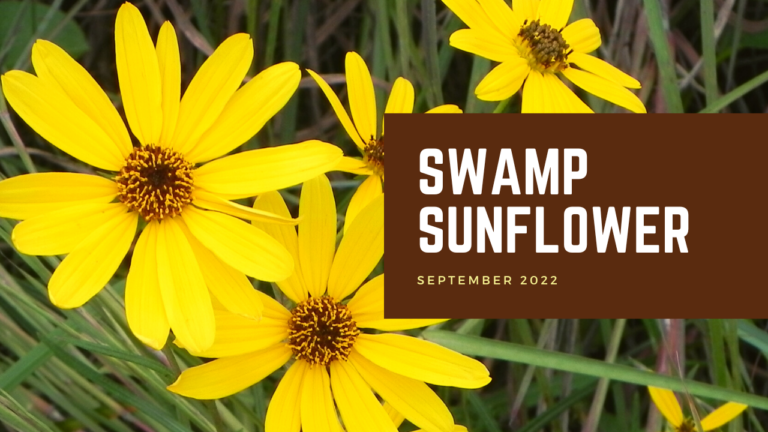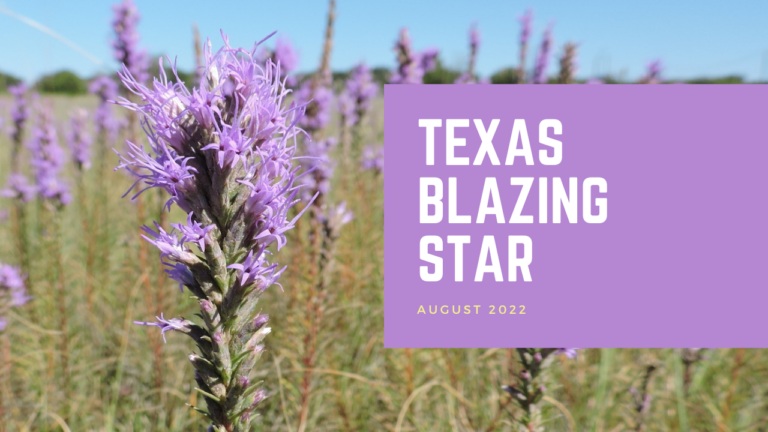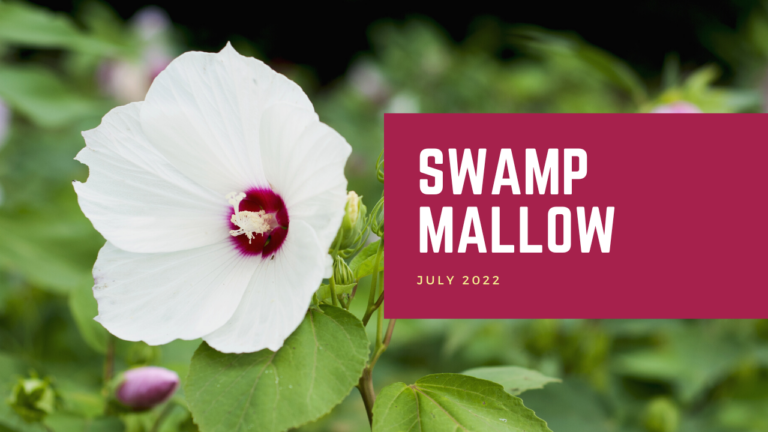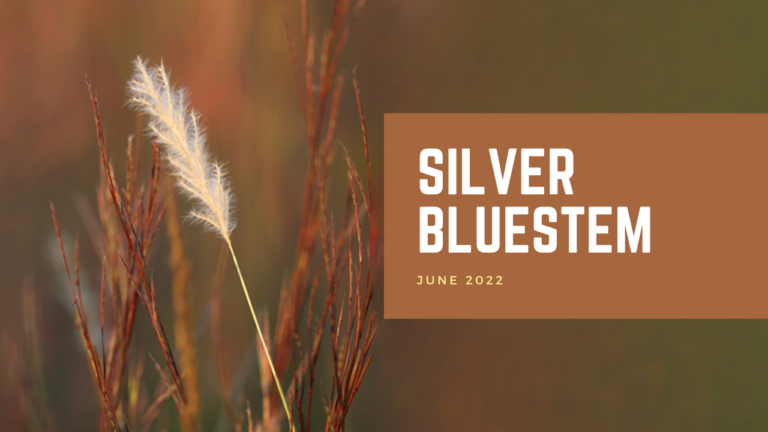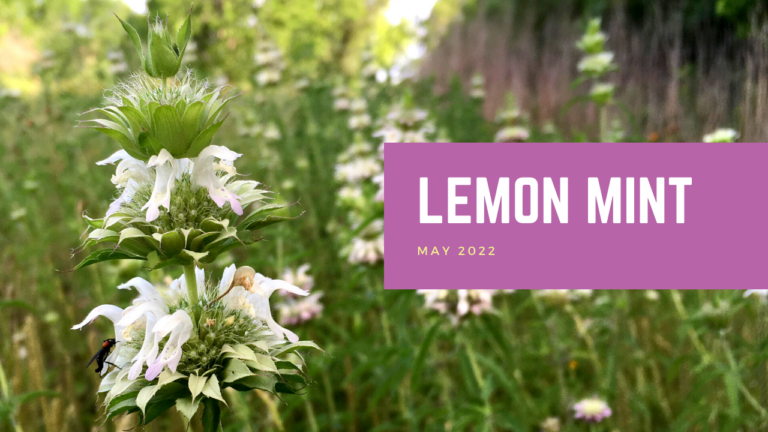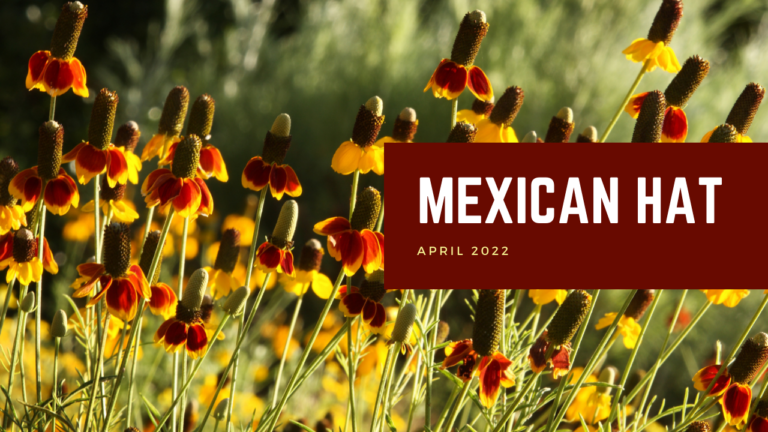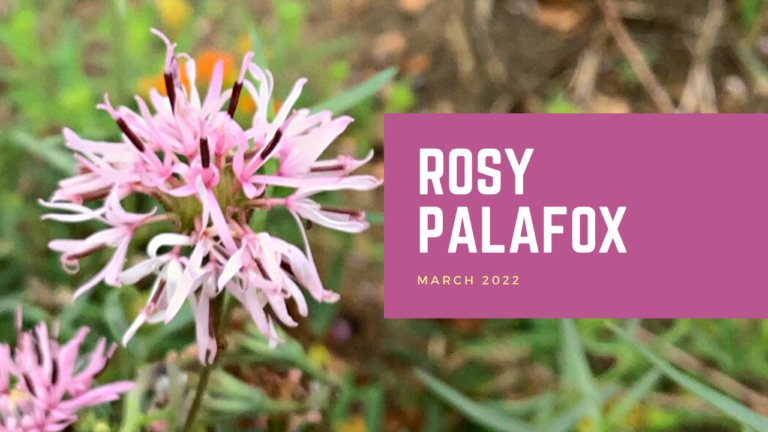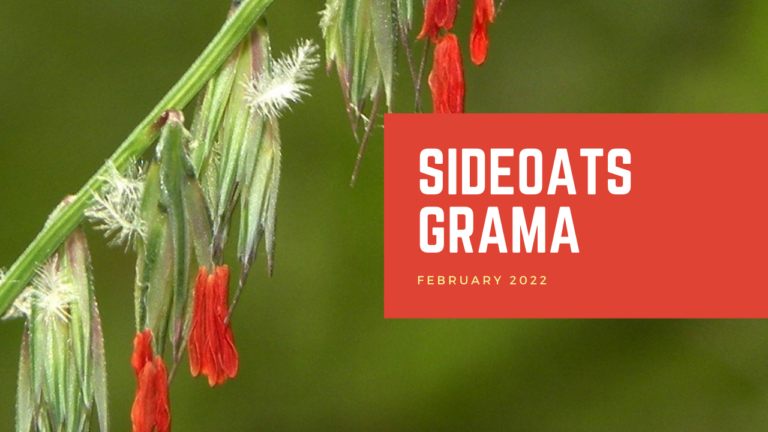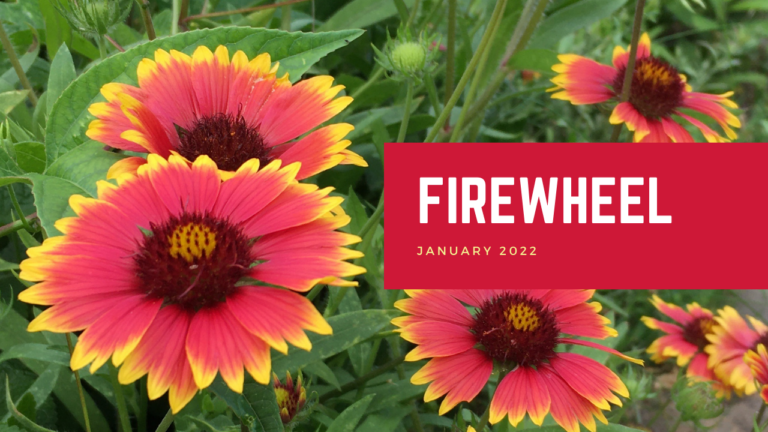| June 2024 | Teucrium canadense | American Germander |
| May 2024 | Bidens aristosa | Swamp Marigold |
| March 2024 | Verbesina virginica | Frostweed, White Crownbeard, Iceplant, Iceweed, Virginia Crownbeard |
| February 2024 | Galium aparine | Sticky Weed, Sticky Willy, Sticky Grass, Goosegrass, Catchweed Bedstraw, Cleavers |
| October 2023 | Celtis laevigata | Sugar Hackberry, Texas Sugarberry, Sugarberry, Southern Hackberry, Lowland Hackberry, Hackberry, Palo Blanco |
| September 2023 | Malvaviscus arboreus var. drummondii | Turk’s Cap, Wax Mallow, Red Mallow, Texas Mallow, Mexican Apple, Sleeping Hibiscus, Bleeding Hearts, Manzanita |
| August 2023 | Andropogon ternarius | Splitbeard Bluestem, Split Bluestem, Feather Bluestem, Paintbrush Bluestem, Silvery Beardgrass |
| July 2023 | Oenothera speciosa | Pink Evening Primrose, Showy Evening Primrose, Mexican Evening Primrose, Showy Primrose, Pink Ladies, Pink Buttercups, Buttercups |
| June 2023 | Iris brevicaulis | Zigzag Iris, Leafy Blue Flag |
| May 2023 | Asclepias tuberosa | Butterfly Weed, Butterfly Milkweed, Orange Milkweed, Pleurisy Root, Chigger Flower, Chigger Weed |
| April 2023 | Chorioactis geaster | Texas Star Mushroom, Devil’s Cigar, Kirinomitake |
| March 2023 | Morus microphylla | Texas Mulberry |
| February 2023 | Amsonia tomentosa | Woolly Bluestar, Woolly Amsonia, Small Leaves Amsonia, Gray Amsonia |
| January 2023 | Pleurotus ostreatus | Oyster Mushroom, Pearl Oyster Mushroom |
| November 2022 | Sorghum halepense, Digitaria ciliaris, and Paspalum dilatatum | Invasives: Johnsongrass, Southern Crabgrass, and Dallisgrass |
| October 2022 | Coreopsis lanceolata | Lanceleaf Tickseed, Lanceleaf Coreopsis, Lance-leaved Coreopsis, Sand Coreopsis, Tickseed, Longstalk Coreopsis |
| September 2022 | Helianthus angustifolius | Swamp Sunflower, Narrowleaf Sunflower, Narrow-leaved Sunflower |
| August 2022 | Liatris mucronata | Texas Blazing Star, Texas Gayfeather, Texas Liatris, Cusp Liatris, Cusp Blazing Star, Cusp Gayfeather, Narrow-leaf Liatris, Narrow-leaf Blazing Star, Narrow-leaf Gayfeather |
| July 2022 | Hibiscus moscheutos | Swamp Mallow, Swamp Rose Mallow, Marshmallow Hibiscus, Crimson-eyed Rose-mallow |
| June 2022 | Bothriochloa laguroides | Silver Bluestem, Silver Beardgrass |
| May 2022 | Monarda citriodora | Lemon Mint, Beebalm, Lemon Beebalm, Horsemint, Horse Beebalm, Lemon Horsemint, Mint |
| April 2022 | Ratibida columnifera | Upright Prairie Coneflower, Mexican Hat, Prairie Coneflower, Long-headed Coneflower, Thimbleflower |
| March 2022 | Palafoxia rosea | Rosy Palafox, Rose Palafoxia |
| February 2022 | Bouteloua curtipendula | Sideoats Grama |
| January 2022 | Gaillardia pulchella | Firewheel, Blanket Flower, Indian Blanket |
| November 2021 | Various fall-blooming species | Monarch Fall Migration |
| October 2021 | Dermatophyllum secundiflorum | Texas Mountain Laurel, Mountain Laurel, Mescal Bean, Frijolillo, Frijolito |
| August 2021 | Capsicum annuum | Chile Pequin, Chile Petin, Bird Pepper, Turkey Pepper, Cayenne Pepper |
| July 2021 | Crataegus marshallii | Parsley Hawthorn, Parsleyleaf Hawthorn |
| June 2021 | Alophia drummondii | Pleatleaf Iris, Propeller Flower, Purple Pleat-leaf, Pinewoods Lily |
| May 2021 | Sassafras albidum | Sassafras |
| April 2021 | Scutellaria ovata | Heart-leaf Skullcap |
| March 2021 | Aesculus pavia | Red Buckeye, Scarlet Buckeye, Firecracker Plant |
| February 2021 | Erythrina herbacea | Coralbean, Cherokee Bean, Red Cardinal |
| January 2021 | Eustoma exaltatum | Texas Bluebells, Prairie Gentian, Showy Prairie Gentian |
| December 2020 | Ilex vomitoria | Yaupon Holly, Yaupon, Cassina |
| November 2020 | Chamaecrista fasciculata | Partridge Pea, Sleepingplant, Sensitive Plant, Golden Cassia |
| October 2020 | Diospyros virginiana | Common Persimmon |
| September 2020 | Solidago sempervirens | Seaside Goldenrod |
| August 2020 | Rhus copallinum var. lanceolata | Flame-leaf Sumac, Shining Sumac, Winged Sumac, Prairie Sumac |
| July 2020 | Carex spp., Carex cherokeensis, Carex leavenworthii, Carex texensis | Sedges, Cherokee Sedge, Leavenworth’s Sedge, Texas Sedge |
| June 2020 | Prunus mexicana | Mexican Plum, Bigtree Plum, Inch Plum |
| March 2020 | Penstemon tenuis | Gulf Coast Penstemon |
| February 2020 | Itea virginica | Virginia Sweetspire, Tasselwhite |
| January 2020 | Nothoscordum bivalve | Crow Poison, False Garlic |
| November 2019 | Asclepias spp. | Milkweed |
| October 2019 | Ilex vomitoria | Yaupon Holly |
| September 2019 | Echinacea purpurea | Purple Coneflower |
| August 2019 | Verbesina virginica | Frostweed |
| July 2019 | Helenium amarum | Sneezeweed, Bitterweed |
| June 2019 | Muhlenbergia capillaris | Hairawn |
| May 2019 | Chromolaena ivifolia | Ivyleaf Thoroughwort, Blue Boneset |
| April 2019 | Desmanthus illinoensis | Illinois Bundleflower |
| March 2019 | Prunella vulgaris | Heal-all, Selfheal |
| February 2019 | Penstemon tenuis | Gulf Coast Penstemon, Brazos Penstemon, Sharp-sepal Beardtongue |
| January 2019 | Cuscuta sp. | Smartweed Dodder |
| November 2018 | Lygodium japonicum | Japanese Climbing Fern (Non-native) |
| October 2018 | Symphyotrichum oblongifolium | Fall Aster |
| September 2018 | Callicarpa americana | American Beautyberry |
| August 2018 | Salvia lyrata | Lyreleaf Sage |
| July 2018 | Elymus canadensis | Canada Wild Rye |
| June 2018 | Toxicodendron radicans | Poison Ivy |
| May 2018 | Coreopsis lanceolata | Lanceleaf Coreopsis, Lanceleaf Tickseed |
| April 2018 | Baptisia sphaerocarpa | Yellow Wild Indigo, Yellow Bush Pea, Yellow Wisteria, Green Wild Indigo, Bush Pea |
| March 2018 | Setaria geniculata | Knotroot Bristlegrass |
| February 2018 | Arnoglossum plantagineum | Prairie Plantain, Indian Plantain |
| January 2018 | Rudbeckia grandiflora | Rough Coneflower |
| November 2017 | Asclepias perennis | Aquatic Milkweed |
| October 2017 | Vernonia missurica | Missouri Ironweed |
| August 2017 | Cephalanthus occidentalis | Buttonbush |
| July 2017 | Kosteletzkya virginica | Saltmarsh Mallow, Seashore Mallow |
| June 2017 | Physostegia intermedia | Obedient Plant, False Dragonhead, Lionheart |
| May 2017 | Arnoglossum ovatum | Ovateleaf Indian Plantain |
| April 2017 | Asclepias viridis | Green Milkweed, Green Antelopehorn |
| March 2017 | Hyptis alata | Clustered Bushmint |
| February 2017 | Hibiscus moscheutos | Rose Mallow, Hardy Hibiscus |
| January 2017 | Herbertia lahue | Herbertia, Prairie Nymph |
| December 2016 | Hymenocallis liriosme | Texas Spiderlily, Spiderlily, Spring Spiderlily, Louisiana Spiderlily |
